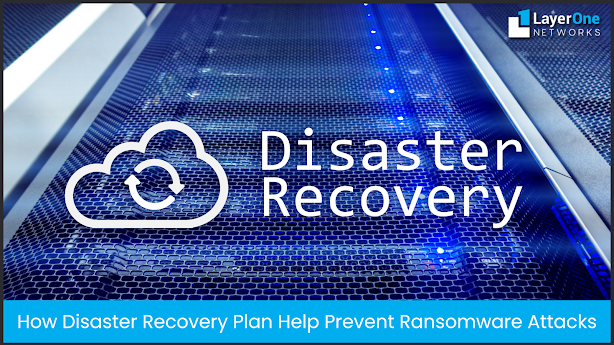Ransomware attacks have become a danger to organizations of all kinds in today's digital environment. These assaults can seriously harm a company's operations and cost money. In such situations, a disaster recovery plan is critical in helping businesses recover from such an attack.
Disaster recovery services are crucial for reducing the effects of a ransomware attack because they give organizations a systematic and controlled way to restore their data and systems. This article will discuss how disaster recovery plans can help prevent ransomware attacks and the role of disaster recovery services.
Why is Ransomware So Prevalent?
Ransomware has become one of the most prevalent cybersecurity threats to businesses and individuals worldwide. The rise of ransomware attacks can be attributed to various factors, including the lack of proper cybersecurity measures in place.
Many businesses need more resources or expertise to implement effective cybersecurity measures, making them vulnerable to these attacks. This is where IT consulting services can play a critical role in preventing ransomware attacks. Unfortunately, ransomware is still prevalent because so many businesses don't have a solid backup strategy and wind up paying the ransom. In addition to putting money in the hands of the criminals, this also motivates them to keep up their attacks.
IT consultant services can help businesses evaluate their cybersecurity posture and identify vulnerabilities that could lead to a ransomware attack. In addition, they can guide you in implementing best practices and deploying the latest security tools and technologies to prevent ransomware attacks.
How Does a Disaster Recovery Plan Prevent Ransomware?
A disaster recovery plan is critical to any organization's cybersecurity strategy, especially when preventing ransomware attacks. Preparation is essential when it comes to minimizing the effects of a potential ransomware attack.
A well-designed disaster recovery plan can help organizations minimize the impact of ransomware attacks by providing them with a systematic and organized approach to recovering their data and systems. IT consulting firms can help organizations develop and implement a disaster recovery plan to prevent ransomware attacks.
In its most basic form, a disaster recovery plan deals with a potential ransomware assault. Your business is protected from the catastrophic impacts that a hacker could do by a sound plan and proactive security services. To stop ransomware attacks, businesses can create and implement a disaster recovery strategy with IT consulting services.
Related Posts: 7 Tips for Disaster Recovery Planning to Help Protect Your Business
How to Create a Disaster Recovery Plan that Prevents Ransomware
Consider the following advice while creating a top-notch Disaster Recovery Plan:
1. Include Key Goals, RPOs, RTOs, and Testing Strategies
Each of the crucial elements listed below should be part of your plan:
Clarified recovery objectives for each area within your organization
Recovery point objectives (RTOs) and practical RPOs (recovery time objective)
A method for evaluating objectives and modifying the plan in light of the results
Knowing when to enlist the help of a disaster recovery specialist is crucial for making sure that every aspect of your plan is customized to your particular business procedures. In addition, an expert can be quite helpful if you are still determining the best approach to assemble a particular element of your strategy because your plan should be thorough.
2. Invest in Reliable Data Backup
A speedy recovery depends on data backup; else, you risk losing important files. An offsite or cloud service is one of the best backup methods. In case ransomware infects your machine, you will have a backup of your data stored safely somewhere else. To prevent your data from being read or compromised, even if it is stolen, it is crucial to employ encryption when selecting an offsite or cloud backup provider.
3. Prioritize Seamless Communication
To ensure that everyone is aware of what to do in the case of an attack, your plan should have a clear communication strategy in place. Avoiding misunderstanding and getting everyone on the same page as soon as possible after an assault is crucial to rebuilding your systems quickly. Also, you should be aware of who to call and how to contact them in the event of an incident. Together with your partners and vendors, this also applies to your outsourced IT team.
4. Test Your Plan Regularly
If you don't periodically test your plan, it probably won't help you much. However, by testing it, you can identify weak points in your strategy and make the required corrections to make it more robust. At least once a year, you should test your strategy to revise it in light of any internal changes, technological developments, or infrastructural updates your company may have experienced.
Final Thoughts
Protecting your organization from the threat of ransomware requires a detailed approach that includes implementing security measures, developing a disaster recovery plan, and training employees on best practices. Working with a reputable security service in Corpus Christi will give you access to the most up-to-date security tools and knowledge to protect your company from ransomware assaults. In addition, their team of experts can provide various services, including risk assessments, vulnerability testing, security audits, and employee training programs.



Comments
Post a Comment